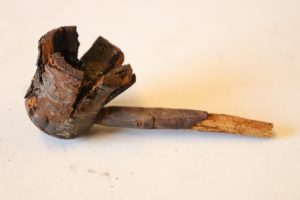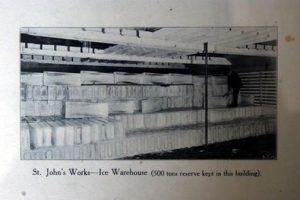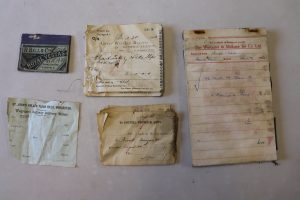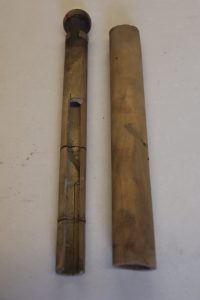Find of the Month – Feb. 2020
- 5th April 2020
During archaeological excavations (or even walking around footpaths between fields) around Worcester, it is not uncommon to find bits of clay pipes. Used by men and women while working the pipe stems often broke as they were held in the owner’s teeth and while they were readily available from shops they were also sold in inns with a drink.
This month’s find is quite unusual in that it is a pipe from around the same period as clay pipes were available (late 19th century), only this one is hand-made out of a tree branch which is rare.
The hand-made pipe

The image is of the pipe remains that are around 15cm long with the bowl and stem formed from tree branches with the stem hollowed out and tapered to fit in the bowl.
The split rim is probably flared at the top due to the wood drying out, but it has been deliberately sliced down into the bowl to allow for the expansion of the wood while in use.
The stem seems to have been deliberately formed so it could be replaced when worn.
Who would have gone to the trouble?
Someone who clearly had the skills to make the pipe, and the knowledge of how the wood could be used for heat.
The site where the pipe was found was one where the earliest recorded building was related to a mill as illustrated on the Doharty map of 1729. Mudwall Mill, as it was named in 1853 was named as St Johns Mill in 1884.
The buildings took their form when in around 1868 when W Hadley took over the site. Some buildings were constructed between this date and the time of the 1st edition Ordnance Survey map of 1884. William Hadley and Son were listed as steam miller in 1873 and it is clear that two buildings were designed together as a steam powered mill.
The site was used by Worcester and Midland Ice Co Ltd in 1898. Evidence of this was found from a thermometer with the red lines show a normal range of between 28° to 33° Fahrenheit (-2.2° to 0.5° Celsius). This photograph shows storage of 500 tons of ice reserve stored in a building next to where the pipe was found, with a man standing on it (right).


The building most notably had large internal insulation doors, a thermometer of probable 1920s date and evidence of later hop cold storage.

These hand-carved tools found near the pipe were used to hold a thermometer that was inserted through a hole in the wall of the store to work out the temperature without having to open the door.
An inventive use of skills
While pipe smoking was common-place and clay pipes readily available, this hand-made pipe was a wonderfully quirky find for our archaeologists.
The industrial area in which it was found had buildings changing to suit needs as they arose, and the worker in the ice-factory having made the pipe by hand, touches on the lives of the people that worked and lived in the area and the skills he may have had from a former line of work.
Post a Comment